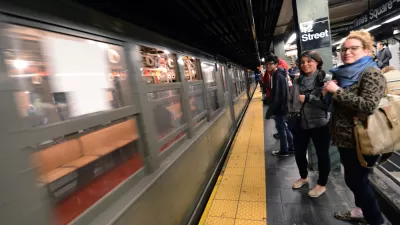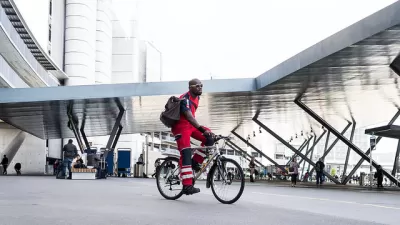Many planners say they want to try out active commutes when in-office work becomes possible. How will a fresh look at their local streets influence planning professionals and planning practice?

A survey of 1,000 planning professionals conducted by Kittelson & Associates asked whether remote work has changed preferences about commuting to work. A surprising number of workers in government and the built environment professions want to try an active commute once they return to the office post-pandemic the survey finds—a change in habits that might reduce the widespread windshield bias that has subtly shaped city decision making for generations.
"Like several broader studies have found, many respondents remain shy of returning to public transportation, but 23 percent of workers who previously took transit every day indicated that they plan to try a bike, walk, or other active commute once they can return to the workplace — compared to about 18 percent that will commute solo by car," writes Kea Wilson.
Equally important, 44 percent of survey respondents said they would opt for biking or walking over mass transit commutes in the future. Only .5 percent of Americans in the transportation industry chose active commuting in 2014, according to an American Community Survey survey.
"One thing’s for sure: if all these powerful people actually make good on their intentions to try walking, biking, or wheeling to work, they may get a glimpse of their communities they’ve never seen before. And if they don’t like what they see, maybe they’ll start thinking about how to make our roads better for the rest of us," opines Wilson.
FULL STORY: Study: COVID-19 Might Finally Get City Planners Out of Their Cars

Alabama: Trump Terminates Settlements for Black Communities Harmed By Raw Sewage
Trump deemed the landmark civil rights agreement “illegal DEI and environmental justice policy.”

Planetizen Federal Action Tracker
A weekly monitor of how Trump’s orders and actions are impacting planners and planning in America.

Why Should We Subsidize Public Transportation?
Many public transit agencies face financial stress due to rising costs, declining fare revenue, and declining subsidies. Transit advocates must provide a strong business case for increasing public transit funding.

Understanding Road Diets
An explainer from Momentum highlights the advantages of reducing vehicle lanes in favor of more bike, transit, and pedestrian infrastructure.

New California Law Regulates Warehouse Pollution
A new law tightens building and emissions regulations for large distribution warehouses to mitigate air pollution and traffic in surrounding communities.

Phoenix Announces Opening Date for Light Rail Extension
The South Central extension will connect South Phoenix to downtown and other major hubs starting on June 7.
Urban Design for Planners 1: Software Tools
This six-course series explores essential urban design concepts using open source software and equips planners with the tools they need to participate fully in the urban design process.
Planning for Universal Design
Learn the tools for implementing Universal Design in planning regulations.
Caltrans
Smith Gee Studio
Institute for Housing and Urban Development Studies (IHS)
City of Grandview
Harvard GSD Executive Education
Toledo-Lucas County Plan Commissions
Salt Lake City
NYU Wagner Graduate School of Public Service





























